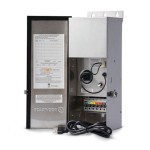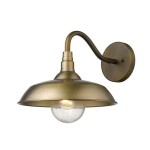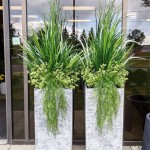Best Fabric To Recover Outdoor Cushions
Outdoor furniture provides an extension of living spaces, allowing for relaxation and entertainment in open-air settings. Cushions are integral to the comfort and aesthetic appeal of this furniture. However, exposure to the elements necessitates that outdoor cushion fabrics possess specific qualities to withstand wear and tear. Selecting the optimal fabric for recovering outdoor cushions involves carefully evaluating several factors to ensure longevity, durability, and visual appeal. This article explores the key considerations and examines some of the best fabric options available.Recovering outdoor cushions represents a cost-effective way to revitalize patio furniture and refresh outdoor spaces. Instead of purchasing entirely new furniture sets, replacing worn or faded cushion fabric breathing new life into existing pieces. The choice of fabric directly influences the cushion's resistance to sun damage, moisture, and mildew. It also affects its overall comfort and style.
The ideal outdoor cushion fabric should exhibit a combination of durability, water resistance, UV resistance, and ease of maintenance. The fabric must withstand prolonged exposure to sunlight without fading or degrading. It must also repel water to prevent moisture absorption, which can lead to mold and mildew growth. Finally, the fabric should be easy to clean and maintain, requiring minimal effort to keep it looking its best.
Key Qualities of Outdoor Cushion Fabrics
Several critical characteristics determine the suitability of a fabric for outdoor cushion applications. Understanding these properties is essential for making an informed decision.
*UV Resistance:
Prolonged exposure to ultraviolet (UV) rays from the sun can cause fabrics to fade, weaken, and eventually disintegrate. Fabrics with high UV resistance are essential for outdoor cushions to maintain their color and structural integrity over time. Solution-dyed acrylic fabrics typically offer superior UV resistance compared to other options, as the color is embedded within the fiber itself.The intensity of the sunlight in the location where the furniture will be used is a primary factor when considering UV resistance. Regions with high UV exposure, such as desert climates or coastal areas, require fabrics with exceptional UV protection.
*Water Resistance and Breathability:
Outdoor cushions are inevitably exposed to rain, spills, and humidity. Water-resistant fabrics prevent water from penetrating the cushion, reducing the risk of mold and mildew growth. However, it's equally important for the fabric to be breathable to allow moisture vapor to escape, preventing condensation and promoting air circulation within the cushion.Some fabrics feature a water-repellent finish, such as a durable water repellent (DWR) coating. While these finishes enhance water resistance, they may wear off over time and require reapplication. Woven construction and the type of fiber used also contribute to water resistance and breathability.
*Durability and Abrasion Resistance:
Outdoor cushions are subject to wear and tear from regular use, including sitting, rubbing, and general handling. Durable fabrics that resist abrasion, tearing, and snagging are essential for withstanding these stresses. Fabrics with a high thread count and tight weave construction tend to be more durable.The intended use of the cushions is another important consideration. Cushions used in high-traffic areas, such as poolside seating, require more durable fabrics than those used in more sheltered locations. Consider the weight and thickness of the fabric as indicators of its durability.
Top Fabric Choices for Outdoor Cushions
Several types of fabrics are commonly used for outdoor cushions, each with its own set of advantages and disadvantages. Examining these options will help guide the selection process.
*Solution-Dyed Acrylic:
Often considered the gold standard for outdoor cushions, solution-dyed acrylic fabrics offer exceptional UV resistance, durability, and water resistance. The color is added to the fiber during the manufacturing process, ensuring that it penetrates all the way through, rather than just being applied to the surface. This makes the color highly resistant to fading, even after prolonged exposure to sunlight.Solution-dyed acrylic fabrics are also resistant to mold, mildew, and stains, making them easy to clean and maintain. They are available in a wide range of colors, patterns, and textures, providing ample design flexibility. While solution-dyed acrylic fabrics are generally more expensive than other options, their superior performance and longevity make them a worthwhile investment.
*Polyester:
Polyester is a synthetic fabric known for its durability, water resistance, and affordability. While it offers good UV resistance, it is typically not as high as that of solution-dyed acrylic. Polyester fabrics are available in a wide range of weights and weaves, making them suitable for various outdoor applications.Polyester fabrics are relatively easy to clean and maintain, and they resist shrinking and stretching. However, some polyester fabrics may be prone to pilling or snagging, especially if they are not tightly woven. Recycled polyester is an environmentally friendly option that offers similar performance characteristics to virgin polyester.
*Olefin:
Olefin, also known as polypropylene, is another synthetic fabric that is commonly used for outdoor cushions. It is known for its excellent colorfastness, stain resistance, and water resistance. Olefin fabrics are lightweight, durable, and relatively inexpensive.Olefin fabrics are also resistant to mold and mildew, making them a good choice for humid environments. While olefin offers good UV resistance, it may not be as high as that of solution-dyed acrylic. Olefin fabrics are often used in woven patterns, which can add texture and visual interest to outdoor cushions.
Factors to Consider When Selecting Fabric
Beyond the specific fabric types, several other factors influence the optimal choice for recovering outdoor cushions. Addressing these considerations will ensure that the selected fabric meets the specific needs and aesthetic preferences.
*Climate:
The climate in which the outdoor furniture will be used is a significant consideration. In hot, sunny climates, UV resistance is paramount. In humid climates, water resistance and mold resistance are essential. In colder climates, the fabric should be able to withstand temperature fluctuations and potential freezing conditions.For example, furniture located near saltwater may require fabrics with enhanced salt resistance to prevent corrosion and degradation. Similarly, furniture under trees may require fabrics that resist staining from sap or bird droppings.
*Aesthetic Preferences:
The fabric should complement the style of the outdoor furniture and the overall aesthetic of the outdoor space. Consider the color, pattern, and texture of the fabric, as well as its compatibility with other outdoor elements, such as rugs, planters, and décor.Neutral colors and classic patterns tend to be more versatile and timeless, while bolder colors and patterns can add a pop of personality to the outdoor space. Consider the scale of the pattern in relation to the size of the cushions. Small patterns may get lost on large cushions, while large patterns may be overwhelming on small cushions.
*Maintenance Requirements:
The amount of effort required to clean and maintain the fabric is an important consideration, especially for busy individuals. Fabrics that are easy to clean and stain-resistant will require less maintenance over time.Consider whether the fabric is machine washable or requires spot cleaning only. Also, consider whether the fabric requires special treatments, such as waterproofing or stain repellent, to maintain its performance. Reading fabric care labels will provide insight and proper care requirements.
By carefully considering these factors and exploring the various fabric options available, it is possible to select the best fabric for recovering outdoor cushions. The right fabric will not only revitalize the appearance of outdoor furniture but also ensure its long-lasting durability and comfort, providing years of enjoyment in the outdoor living space.

The No Sew Way To Reupholster Outdoor Cushions Blue I Style

No Sew Project How To Recover Your Outdoor Cushions Using Fabric And A Glue Gun The V Spot

How To Re Cover Outdoor Cushions A Quick Easy Diy Oh Yay Studio Color Painting Making Everyday Celebrating

Sew Easy Outdoor Cushion Covers Confessions Of A Serial Do It Yourselfer

How To Recover Your Outdoor Cushions For Deck Or Patio Furniture

How To Re Cover Outdoor Cushions A Quick Easy Diy Oh Yay Studio Color Painting Making Everyday Celebrating

How To Recover Your Outdoor Cushions Quick Easy Jennifer Maker

How To Recover Your Outdoor Cushions For Deck Or Patio Furniture

How To Dye Outdoor Cushion Covers Alice And Lois

Fabric For Outdoor Cushions Sunbrella
Related Posts







